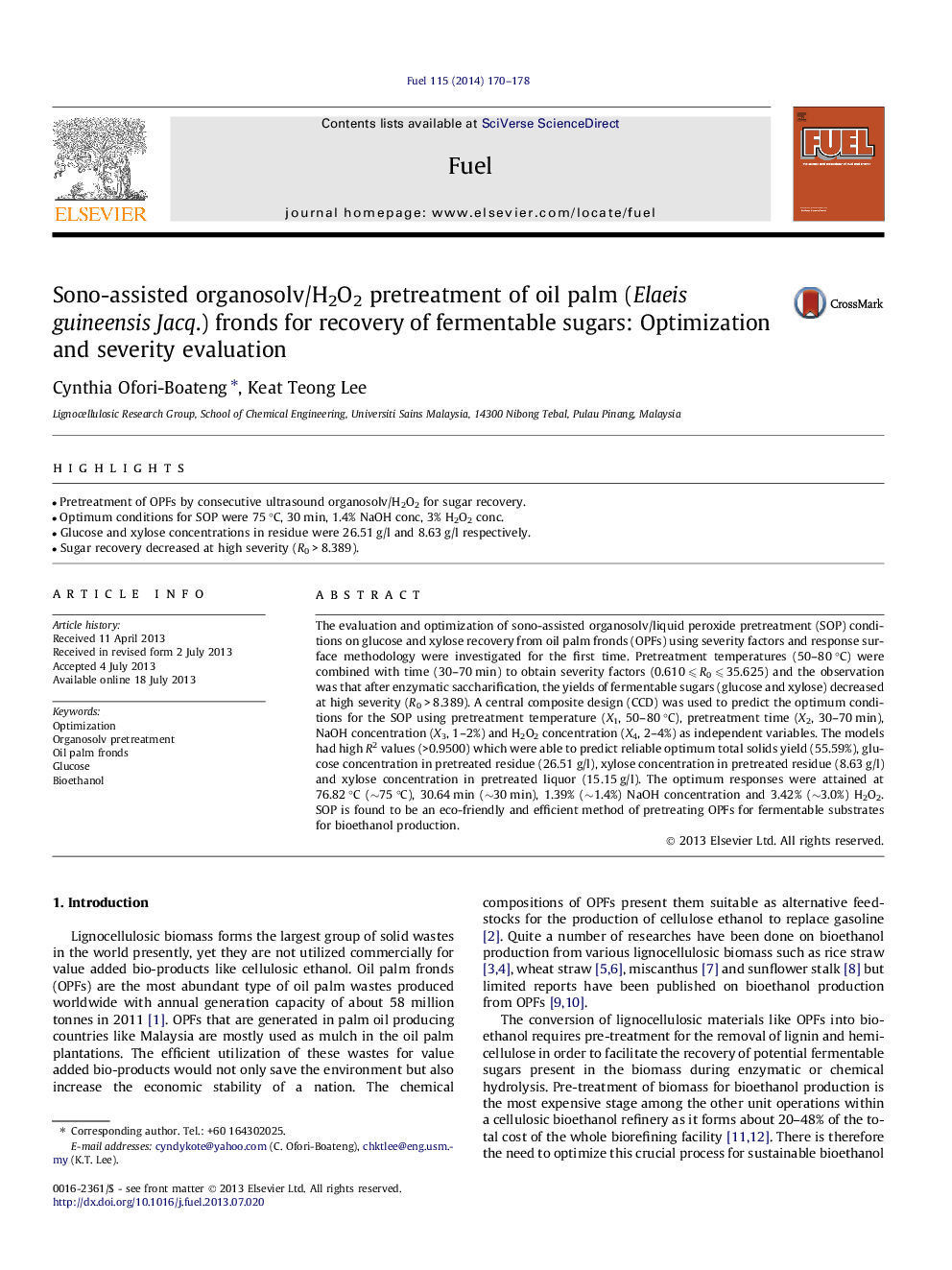| Article ID | Journal | Published Year | Pages | File Type |
|---|---|---|---|---|
| 6639263 | Fuel | 2014 | 9 Pages |
Abstract
The evaluation and optimization of sono-assisted organosolv/liquid peroxide pretreatment (SOP) conditions on glucose and xylose recovery from oil palm fronds (OPFs) using severity factors and response surface methodology were investigated for the first time. Pretreatment temperatures (50-80 °C) were combined with time (30-70 min) to obtain severity factors (0.610 ⩽ R0 ⩽ 35.625) and the observation was that after enzymatic saccharification, the yields of fermentable sugars (glucose and xylose) decreased at high severity (R0 > 8.389). A central composite design (CCD) was used to predict the optimum conditions for the SOP using pretreatment temperature (X1, 50-80 °C), pretreatment time (X2, 30-70 min), NaOH concentration (X3, 1-2%) and H2O2 concentration (X4, 2-4%) as independent variables. The models had high R2 values (>0.9500) which were able to predict reliable optimum total solids yield (55.59%), glucose concentration in pretreated residue (26.51 g/l), xylose concentration in pretreated residue (8.63 g/l) and xylose concentration in pretreated liquor (15.15 g/l). The optimum responses were attained at 76.82 °C (â¼75 °C), 30.64 min (â¼30 min), 1.39% (â¼1.4%) NaOH concentration and 3.42% (â¼3.0%) H2O2. SOP is found to be an eco-friendly and efficient method of pretreating OPFs for fermentable substrates for bioethanol production.
Related Topics
Physical Sciences and Engineering
Chemical Engineering
Chemical Engineering (General)
Authors
Cynthia Ofori-Boateng, Keat Teong Lee,
